Growing astilbe (aka false goat’s beard) is easy and they don’t require any special care.
In this article, I will tell you everything you need to know, including where to plant them, water, sunlight, soil, fertilizer, and much more!
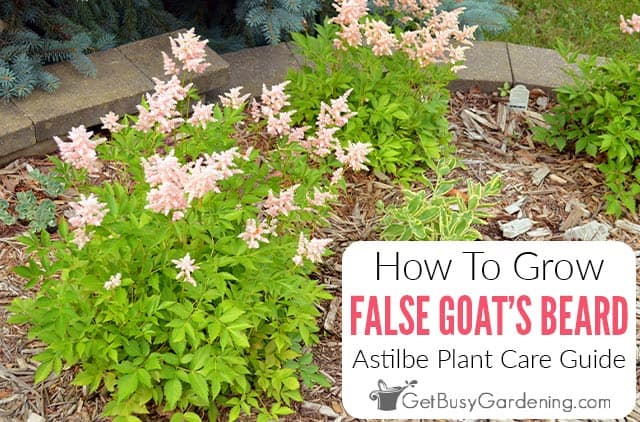
With its airy, leafy foliage and striking flowers, astilbes make a colorful addition to shady perennial gardens.
Enjoying the blossoms year after year is easy, once you’ve learned how to give your false goat’s beard the love and attention it needs to thrive.
In this astilbe care guide, I’ve answered all the basic questions gardeners might have about how to grow them.
Below you’ll learn about the different varieties, how to water, feed, and prune it, and how to ensure your false goat’s beard fills your garden with blooms every year.
What Is False Goat’s Beard?
False goat’s beard, also known as astilbe or false spirea, is an herbaceous perennial with many varieties. They’re a wildflower found natively in mountainous regions of Asia and North America.
Every year, the green, fern-like foliage produces feathery, tall plumes that can range anywhere from 10” to 4’ tall. The blooms are tiny and numerous, creating bushy fronds that resemble ‘beards’.
They’re adored for the striking hues that range from light pink to pale peach, deep magenta, and dark red. The fragrant flowers attract hummingbirds, butterflies, and bees.
Different Types Of Astilbe Varieties
Each variety has different colors and heights. Thankfully, for whichever type of astilbe you choose, the basic care is the same.
Here are some favorites from my own garden:
- Peach Blossom (Astilbe rosea) – The pale coral of these airy blooms are gorgeous in early and mid summer. It grows well in zones 4-9 in partial to full shade, but is also more tolerant of sun than other varieties.
- Fanal (Astilbe arendsii) – The striking deep magenta of the flowers almost glow when the sun hits them in early to mid summer. It prefers full to partial shade in zones 4-8.
- Ostrich Plume (Astilbe thunbergii) – The hot pink of the gracefully drooping plumes reach up to 3’ in the shade of zones 4-8. They’re beautiful when intermixed with other varieties to create layered heights in your garden.
But these are only a few of the many stunning colors so, if you want more ideas, check out this complete list to find your perfect match.
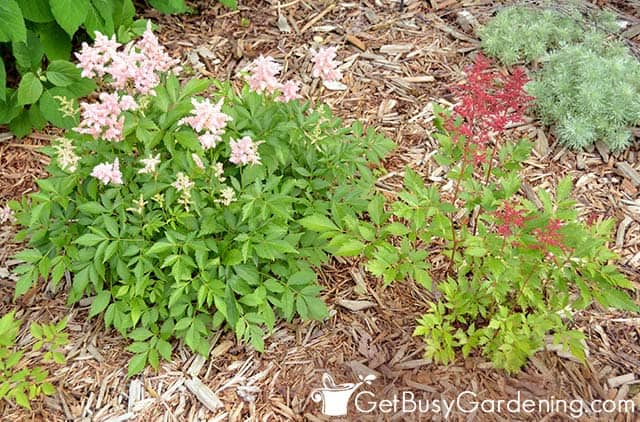
Astilbe Bloom Time & Fragrance
False goat’s beards add height and visual interest to your garden, but not all varieties will flower at the same time.
Their bloom times range from spring to fall, so be sure to check the varieties you’re selecting. Mix them up, and you’ll have some flowering all season long.
Growing more than one variety is also a great way to amplify the subtle, but very pleasant fragrance of false spirea blossoms.
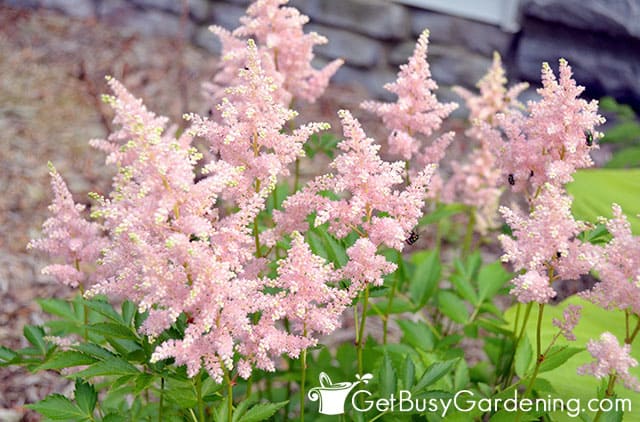
How To Take Care Of False Goat’s Beard
Before we tackle the details of how to care for a false goat’s beard, first let’s talk about where to grow them. Selecting the right spot is an important part of success.
Hardiness
False goat’s beards are perennial plants that are hardy in zones 3 through 9, depending on the variety. They’re very tolerant of frost, and are best kept outdoors.
Garden plants will survive winters in those hardiness zones, but pots provide less insulation. They’ll need to be wintered in a sheltered location, then moved back out in the spring.
Where To Grow Astilbe
Grow astilbe in a shady spot in your garden, or in a pot on the porch, and they will live for many years.
They really are a hardy, low maintenance plant. Most can tolerate full shade, but will flower their best in partial or dappled sun conditions.
All of them prefer a damp soil bed, and from there will happily spread naturally. So give them space to expand over the years.
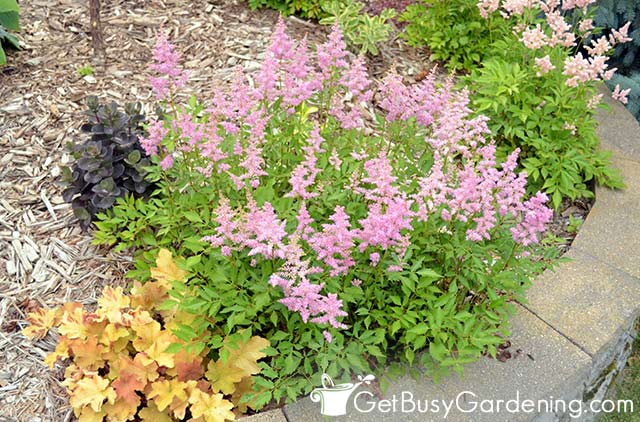
False Goat’s Beard Care & Growing Instructions
With the perfect garden spot picked out, it’s time to dive into false goat’s beard care. Below you’ll find all you need to know about how to grow them.
Light
In general, astilbes do best in the shade. Many varieties will thrive in full shade, though they usually bloom best when they receive partial or dappled sunlight.
For most of them, direct sun will cause burning and curling of the leaves and flowers. But there are some that are tolerant of full sun exposure.
So always check the tag for information on your specific type before you choose a spot in your yard.
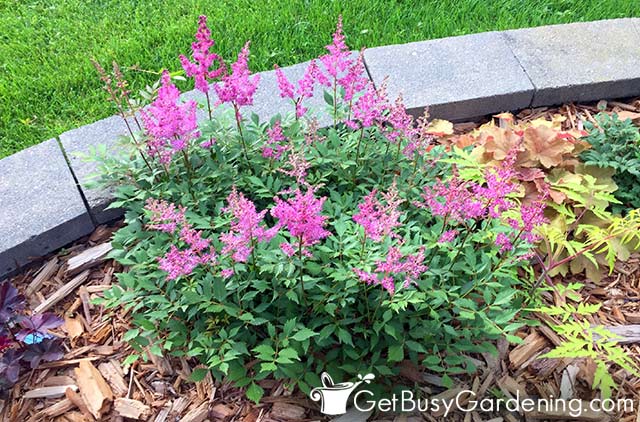
Water
Proper watering is a very important part of astilbe plant care. They’ll thrive when kept moist, especially during the hottest months of the year. Allowing the soil to dry too much will cause browning, and eventually kill the plant.
Water deeply when the soil begins to dry out on the surface. Avoid over-saturation or puddling for extended periods though, or the roots may rot.
Keep in mind that they will dry out faster in the full sun, so you will probably need to water them more often.
Fertilizer
It’s not necessary to fertilize false goat’s beard plants, but feeding them every year is a great way to encourage new growth and full flowering.
It’s easy to add a water soluble fertilizer for blooming plants, or other liquids like compost tea or fish emulsion to your watering can or a hose end sprayer.
You can top dress them with 1-2” of compost. Another great option is slow release granules, which you can add during planting time, or use for top dressing in the spring and summer.

Soil
As I mentioned above, dry soil is dangerous for successful astilbe care. So keep them in moisture-retentive soil that is rich in organic matter.
If you have poor quality or sandy soil, amend it with organic compost and till deeply several weeks before planting. Compost can also improve drainage for heavy or dense clay soils.
They prefer either neutral or slightly acidic soil conditions, which can be checked easily with a pH test kit or a probe.
Transplanting
Since they don’t have very deep roots, transplanting astilbe is not hard. You can divide them every few years in early spring or fall when the weather is cool.
Give your false goat’s beard a good drink a few days prior to transplanting to loosen the roots and make it easier to dig up.
Carefully dig around the rootball so you can remove it without damaging it. Then replant it into the new, prepared hole, fill it in with dirt, and give it a good drink of water.
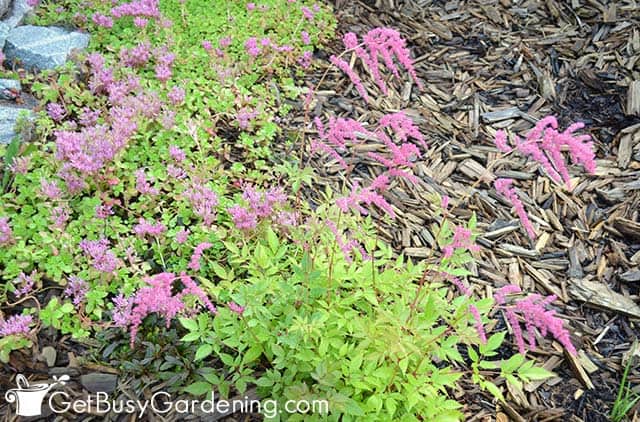
Pruning
Pruning or deadheading astilbe as part of your care routine will not encourage new flowers, but can keep them looking neat and tidy.
Once the blooms fade, you can remove the spikes if you want. Then cut the whole plant all the way down to the ground after the foliage dies back in the fall.
Many gardeners leave them for year-round interest though. The tall plumes dry out by winter, and are a welcome site in a snowy yard.
In this case, cut the dead flower spikes and foliage back to the ground in early spring before new growth begins.
Pest Control Tips
I’m happy to report that in my 20 years of growing astilbe, I have never had issues with bugs or animals (knock on wood!).
They’re a naturally deer resistant plant, but other gardeners have reported issues with rabbits and Japanese beetles munching on young foliage.
A natural rabbit repellent may help you. Try combining a gallon of water with several crushed garlic cloves, and a teaspoon each of mild liquid soap and red pepper flakes.
Bugs can be controlled with diatomaceous earth or by hand picking them off the plant.
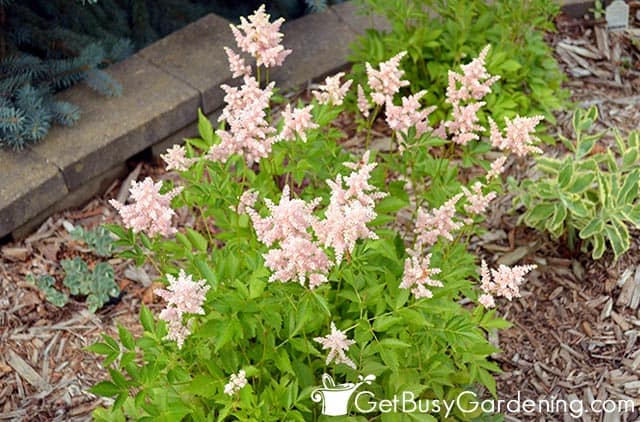
Astilbe Propagation Tips
Growing astilbe from seeds is possible, but very difficult. Division is the best, most-reliable way to help your false goat’s beard reproduce.
Every three to four years it’s actually healthy to divide the rootball in fall or early spring to stimulate new growth and increase flowering.
Each mature plant can usually produce four to five divisions. They can be planted directly, or wintered in a protected spot, and transplanted in the spring.
FAQs About False Goat’s Beard Care
Whew, we’ve gone over a lot of details about how to care for astilbes, but you may still have a question or two. Please check below to see if I’ve already answered it for you. Otherwise you can ask it in the comments section below.
Is false goat’s beard the same as astilbe?
Yes, false goat’s beard is the same as astilbe. It is one of the common names used for all plants in the Astilbe family.
Is goat’s beard invasive?
No, false goat’s beard plants are not considered an invasive species.
Does a false goat’s beard spread?
Yes, a false goat’s beard will slowly spread over the course of years. With time, it will fill its garden space with airy green foliage and tall flower plumes.
Should you fertilize goat’s beard?
Yes, you can fertilize goat’s beard plants every year during the spring and summer. Though feeding them is not absolutely necessary, it will encourage the best flowers and foliage.
Astilbes are easy to care for, and perfect for any shady garden area. Simply follow the growing instructions above, and your false goat’s beard will thrive for many years to come.
More About Flower Gardening
- How To Grow Hydrangeas: Complete Care Guide
- How To Care For Butterfly Weed (Asclepias tuberosa)
- Bougainvillea Care & Growing Guide
- Bird Of Paradise Plant Care & Growing Guide
- How To Care For Angel Wing Begonia
- How To Care For Russian Sage
Share your tips for growing astilbe false goat’s beard in the comments section below.
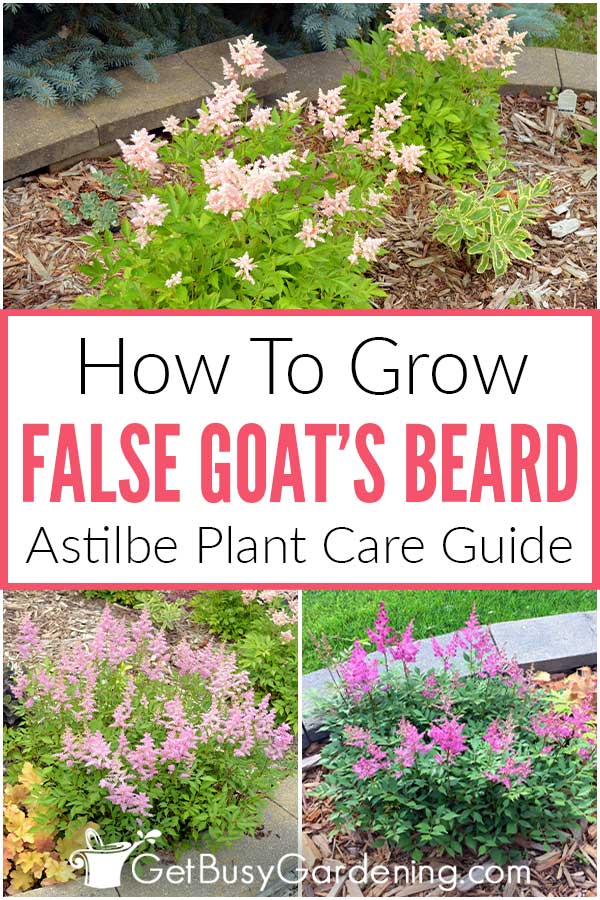
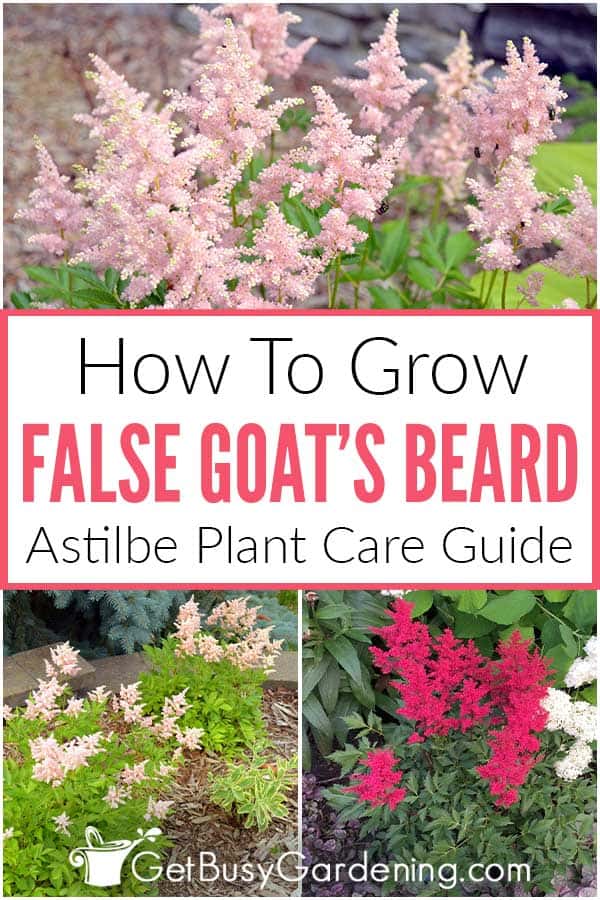
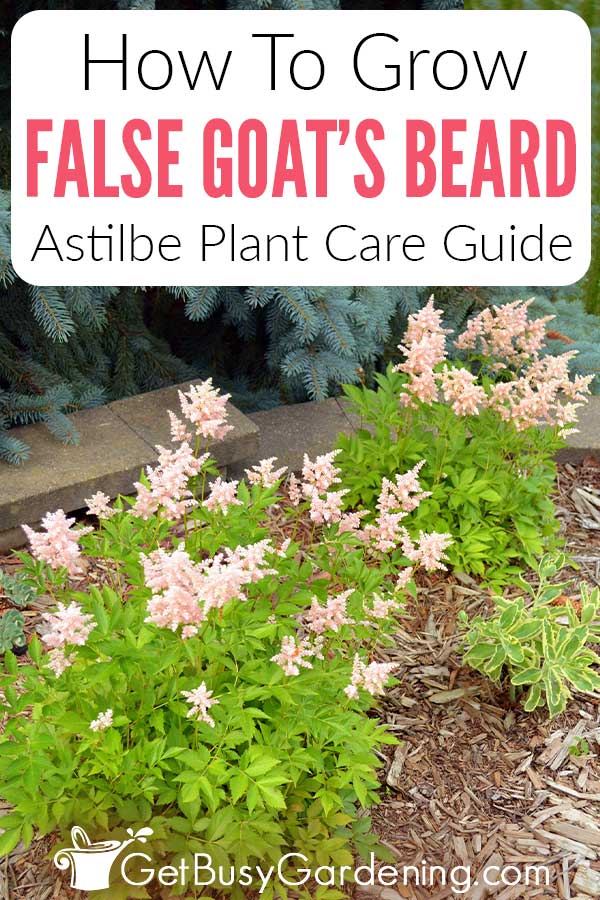


Leave a Reply